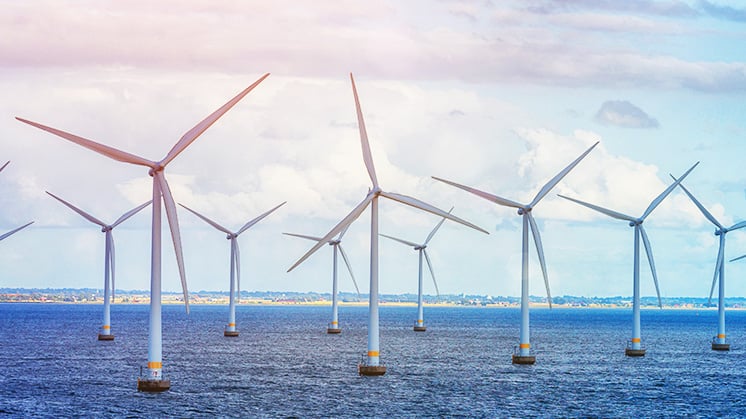
Australia’s electricity system is undergoing unprecedented change arising from the proliferation of renewable energy generation, with South Australia and parts of the National Energy Market (NEM) already reaching the highest level of renewable penetration in the world. While such rapid transition is positive for our decarbonization efforts, our existing grid system is not designed to cope with such rapid transition and is frequently pushed to its limits, threatening the future of our energy security.
The scale of the problem is highlighted by a dramatic increase in number of market interventions performed by the Australian Energy Market Operator (AEMO), from just 15 times in 2016/2017 to 229 times in 2019/20201. Such frequent intervention not only threatens the functioning of the NEM, but also distorts market prices with consumers ultimately footing the bill.
Challenge 1: Reduced system strength and inertia
System strength measures resilience, or how well the system can maintain a stable voltage level when there’s sudden change in supply or demand. System inertia describes the ability of the power system to resists changes in frequency caused by sudden fluctuations in generation output and load levels.
System strength and inertia are traditionally provided by rotating turbines installed in conventional coal- or gas-fired generators. Renewable generators cannot provide them due to the use of inverters; consequently, as more coal-fired plants are replaced by renewables, system strength declines. System strength is necessary to prevent a cascade network failure resulting from unexpected events, such as an unplanned generator failure or a sudden voltage surge. Without system strength, we face increased risk of ‘black out’ events.
Challenge 2: Increasing variability and uncertainty of output
Increasing renewable penetration challenges AEMO’s ability to manage system supply and demand imbalances because the input of renewable generation is weather dependent and difficult to predict. Without accurate forecasting, AEMO is unable to pre-empt upcoming conditions and actions required, therefore becoming increasingly reliant on reactive market interventions to manage disruptions. This distorts the functioning of our electricity system and increases the risk of network failures.
Challenge 3: Increasing decentralisation of energy sources
The third problem is caused by the high penetration of roof-top photovoltaics (PVs) on network voltage stability; a sudden surge of energy supplied from the PVs increases the voltage going through the network. Our existing distribution networks were designed for transporting energy in one direction, from central generators to homes, rather than the opposite direction. Networks may struggle to cope with the two-way traffic, which can destabilise network voltage. Additionally, roof-top PVs are not visible to or managed by AEMO, which challenges its ability to manage system stability.
Solutions and investment implications
Over the past two years, the energy regulators have made numerous rule changes to deal with immediate network issues, while working on long-term solutions to accommodate the transition to renewables.
As an investor, it’s essential to understand how this transition will affect our system and the major changes likely to arise so that ultimately, we can assess the investment implications for the major market participants.
At the very least, a significant volume of network investment and reconfiguration is required in the next decade to accommodate the transition to renewable energy. Transmission network operators are, we believe, clear winners from these changes; they’ll have an opportunity to significantly increase their regulated asset base and earn a higher regulated revenue.
However, their ability to raise equity capital will depend on the attractiveness of the return on equity, which is set by the regulator and has been on a declining trend. Also, we could see a temporary decline in credit profiles during the capex phase of these investments, given the sheer size and duration of these capex projects.
We believe standalone renewable projects could stand to lose further in the near term, given the number of rule changes introduced to deal with the imminent threats within NEM. Not only will output continue to be curtailed, initial capex and ongoing operating costs of renewables will increase to comply with new rules. However, as we decongest the network bottleneck and reconfigure our grid, the long-term outlook remains bright for renewable generation projects.
For large ‘gentailers’, existing conventional generators will play a critical role in providing system strength over the next decade. Gas-fired generators will benefit as their role becomes increasingly important to supplement the renewable generators. From this aspect, we think Origin is better positioned than AGL given Origin’s greater exposure in gas-fired generation. Storage facility such as pumped hydro, battery and hydrogen will also play an increasingly important role in providing system inertia, hence a lot of investments are going into these technologies.
We also see an opportunity for distribution network providers to play a greater role in the NEM as we move away from centralised generation model to distributed generation model. There will be opportunities for greater investments into the network infrastructure and integration of roof-top PVs into the NEM. Both are likely to drive a higher regulated revenue for the distribution network providers in the long run.
However you look at it, changes are coming. Today’s grid is not designed to cope with the rapid transition to renewables. A significant level of investment and reconfiguration is required over the next decade to accommodate it. We will continue to review the sector to understand how this transition will impact the investment landscape for utilities and the major market participants under our coverage.
Find out more about Perpetual’s suite of Credit & Fixed Income Funds.
1. AEMO, Integrated Renewable Study, 2020
